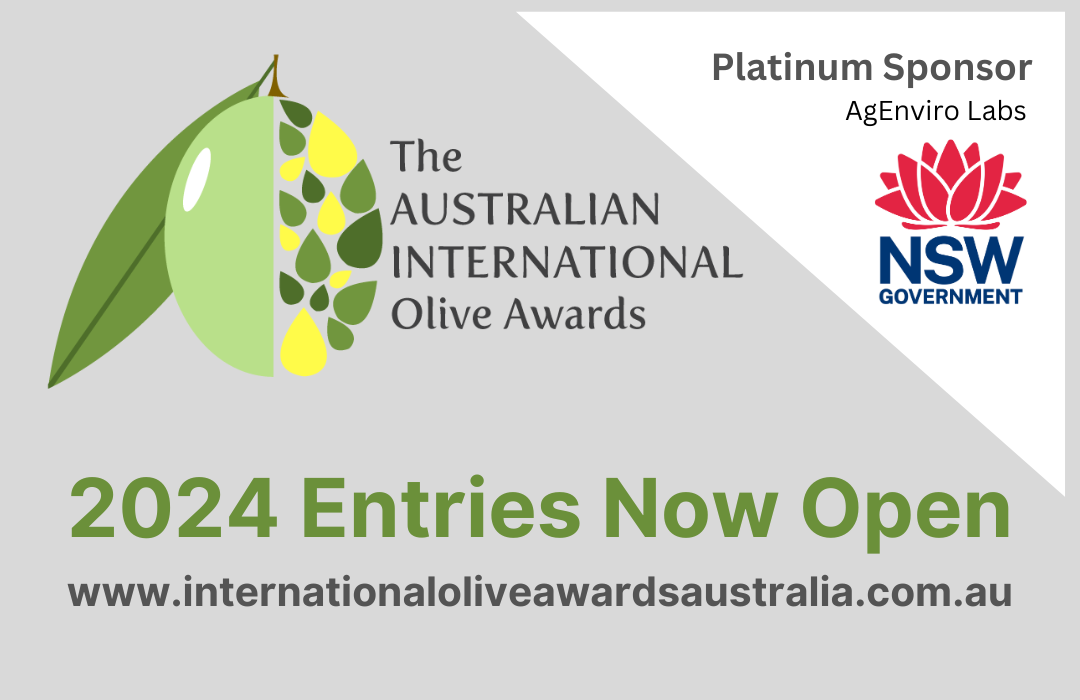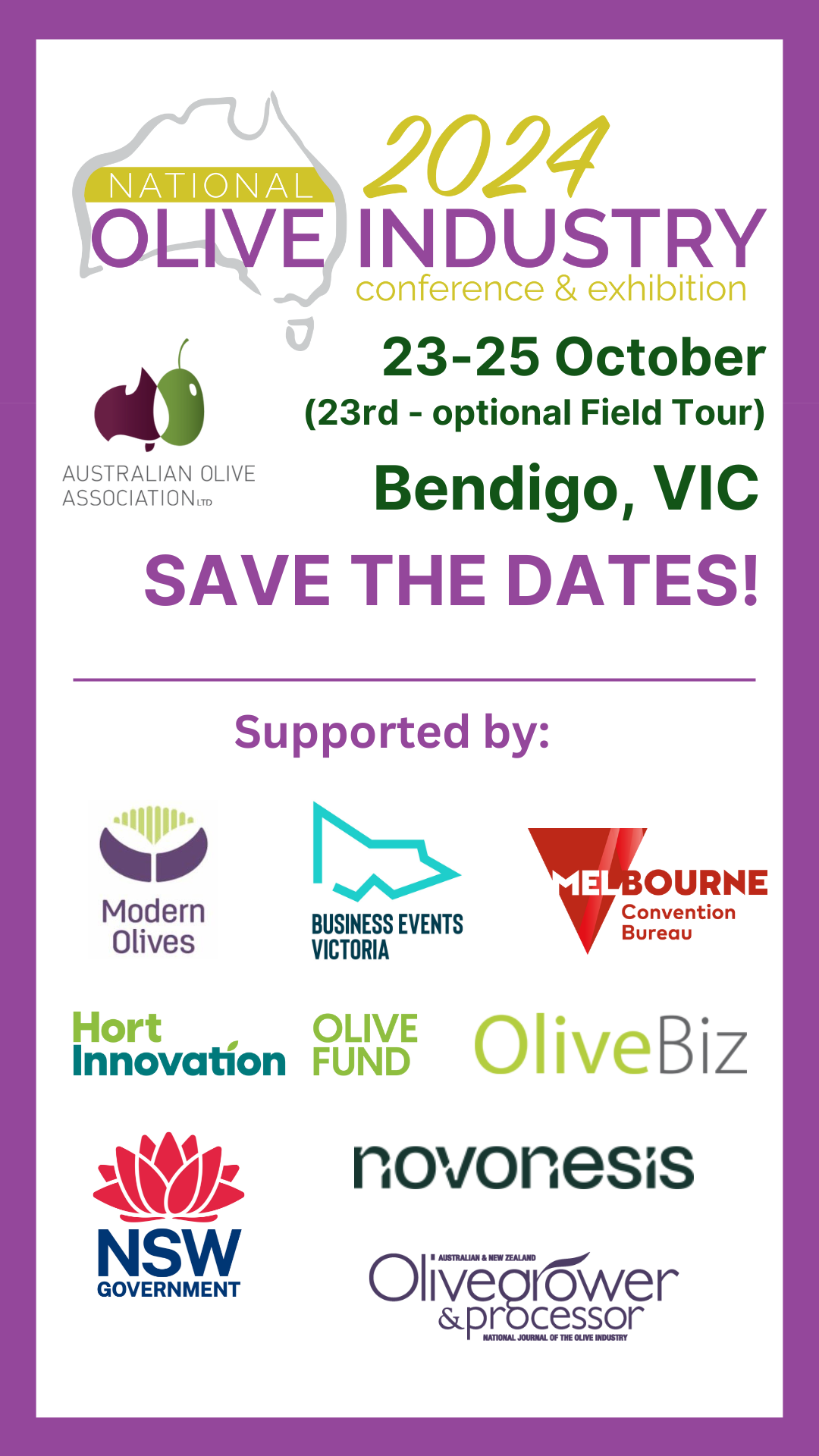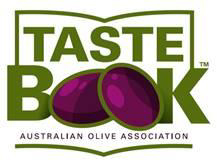
By Dr. Soumi Paul Mukhopadhyay
Introduction:
TasteBook™ is a sensory training initiative by Australian Olive Association (AOA) which continues its journey to share the experience of appreciating, describing and understanding the quality of extra virgin olive oil (EVOO) and table olives (TO). After three successful rounds, the current training program focussed on “green” oils and table olives especially on definitions of attributes and “defective/faulted” oils/olives- not all samples would have positively delighted the palate of the participants. It is always important to know how to communicate well the sensory experience with consumers and within olive industry. For this reason, the entire TasteBook™ program is providing a platform to the participants from different levels of judging expertise to have a learning experience.
Samples and Methodology:
The TasteBook™ round 4 was successfully introduced in August 2018 and concluded within two months. A total of five samples were sent to participants within Australia and abroad (Argentina, New Zealand and USA); the details about the samples are in Table 1.
Table 1: EVOO and TO samples- Round 4:

Results and Discussion:
A total of 43 participants from national and international arena took partin the current round of the TasteBook™program. The “judging experience” of EVOO and the table olives of the participants are presented in Figure 1A and 1B- which reflects a large number of participants are still the olive oil enthusiasts or the producers who would like to understand how to describe well both EVOO and TO. The level of participation from the judges from different levels for EVOO is encouraging (Figure 1A). More participation is required for table olives judges from Level 1-3 in future rounds of TasteBook™; although it is positive to see Associate and Young judges along with table olive enthusiasts are taking active interests in learning and participating in TasteBook™program (Figure 1B).
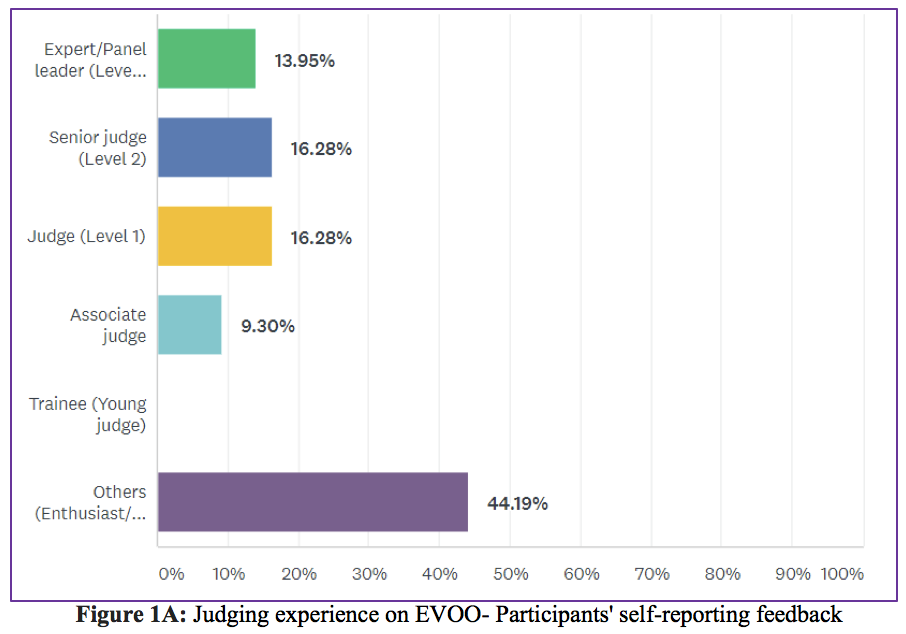
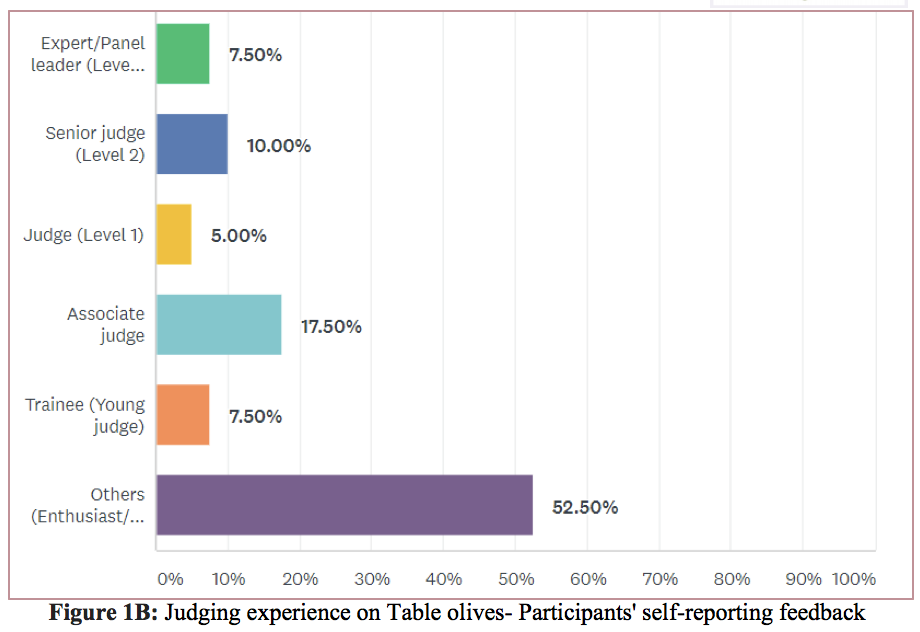
Every participant was asked to taste three samples of olive oil in this round and describe aroma, flavour and mouthfeel attributes with minimum 3-4 descriptors. There were two “defective” oils- Sample A and Sample C with “frost” and “muddy” defects, respectively. One of the learning intentions of this round of TasteBook™ is to provide a platform for the participants to experience “green” oil and table olives; but also familiarise themselves with different defects in olive oils. To visualise better how each sample was perceived and described by the participants (irrespective of their own experience), a “word cloud” was developed to summarise the feedback (Figures 2, 3, 4). To read the word clouds easily, one has to identify the “size” of the words mentioned inside the cloud- the bigger the size of the descriptor, the more frequent that particular descriptor is repeated within participants’ feedback for each sample. To make it reading easier, all three attributes of aroma, flavour and mouthfeel for each sample were combined together and represented as one word cloud.
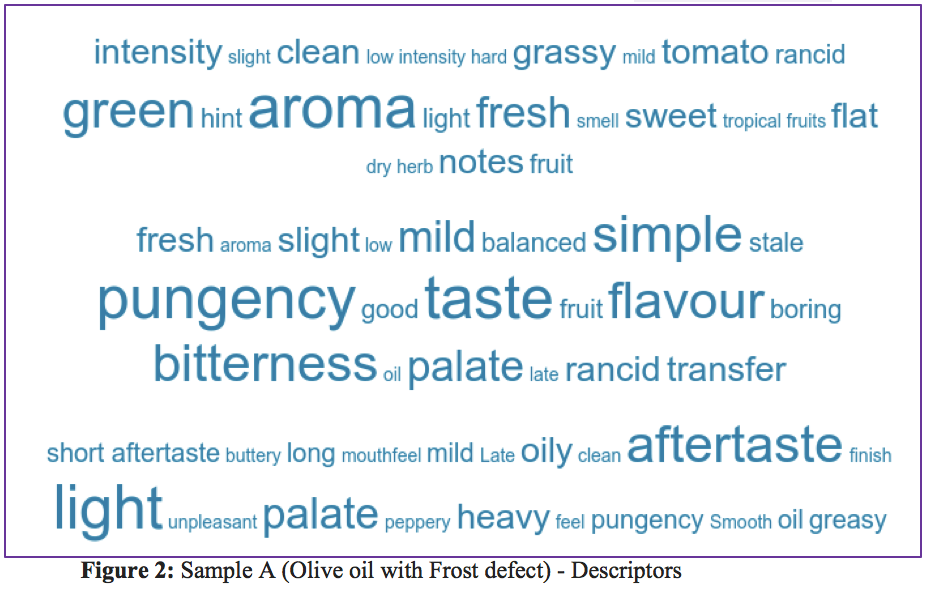
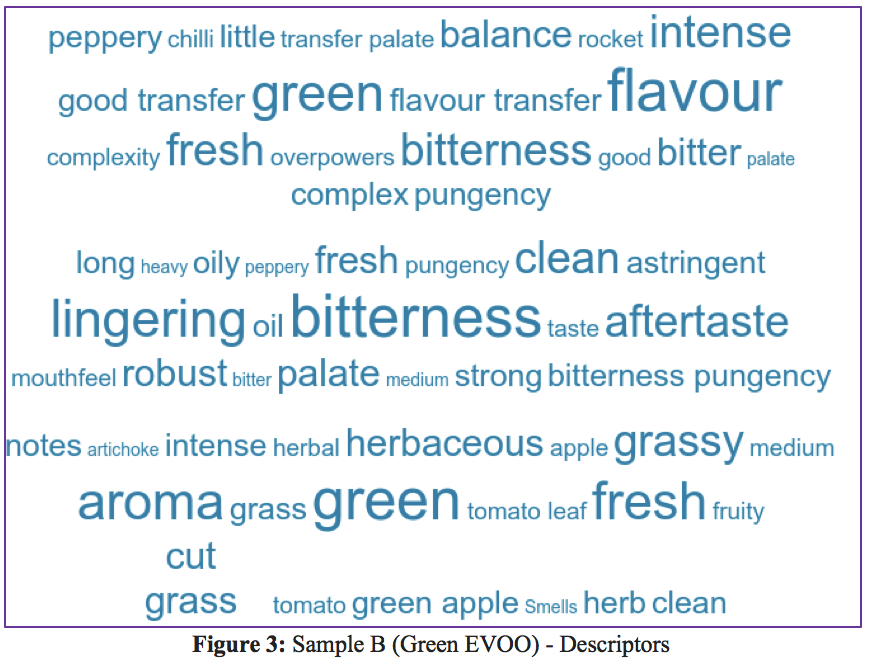
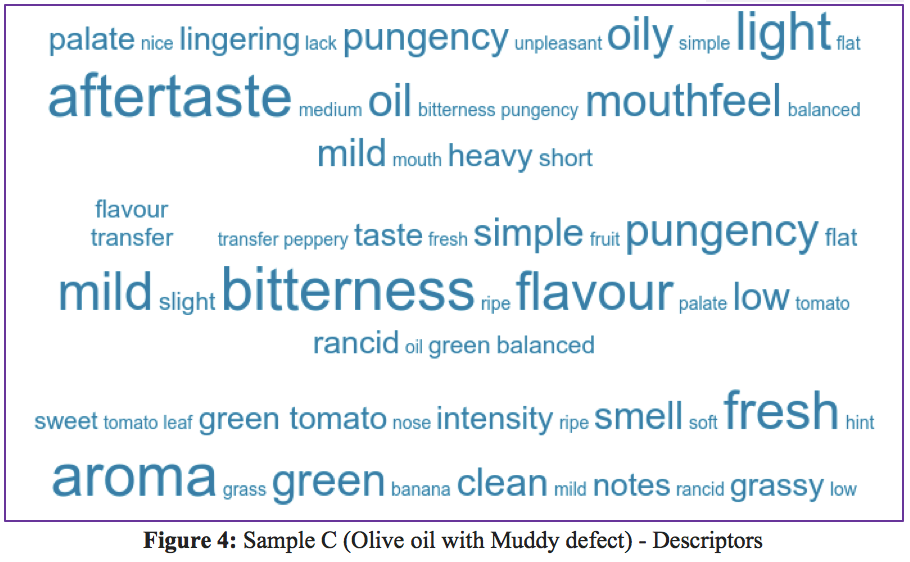
When asked about identifying which olive oil samples were defective, only 44% participants had correctly identified Sample A and C as defective samples; whereas more than 90% participants have correctly identified Sample B as EVOO. This explains the need to train participants from various levels of prior experience about important defects commonly occurring in olive oils. Participants had difficulty in naming the defects correctly too, as only few of them had correctly identified both sample A and C as frosted and muddy, respectively (Figure 5).

It is evident from all three word clouds (Figures 2-4) that the participants could perceive the differences in sensory attributes and defects of all three olive oil samples and they could comfortably identify and describe them well. The numbers of descriptors written by the participants irrespective of their judging experience showed an agreement among them for individual oil and this agreement can be considered as an accomplishment for this program.
Similar approach was taken into consideration for writing descriptors for the two table olive samples. Figures 6 and 7 describe the word clouds reflecting participants’ perception about the most suitable descriptors for both samples.
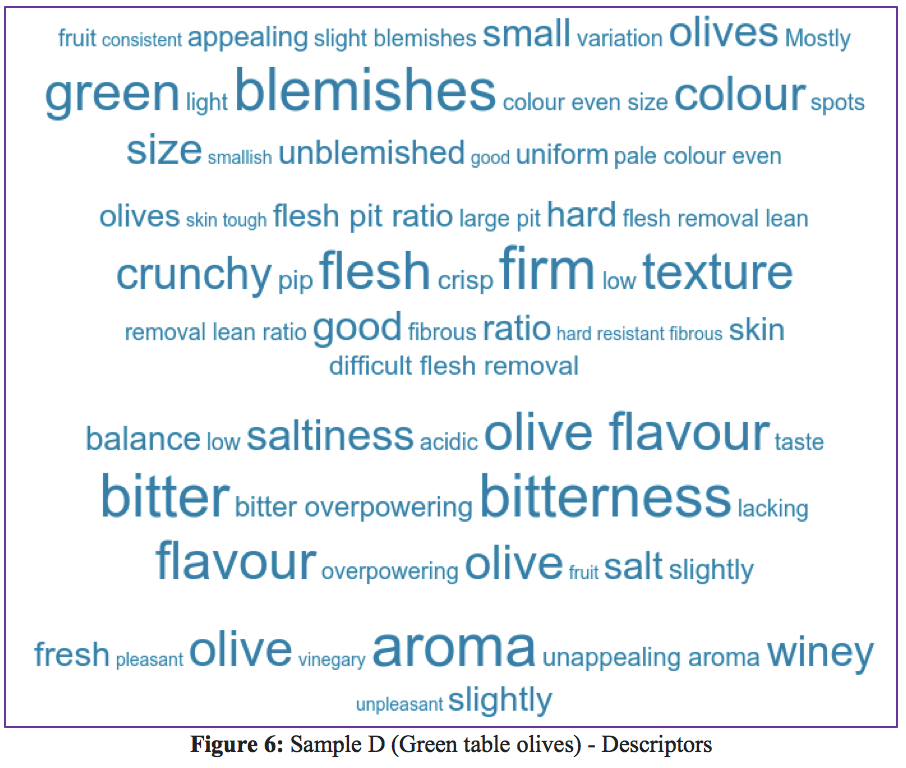
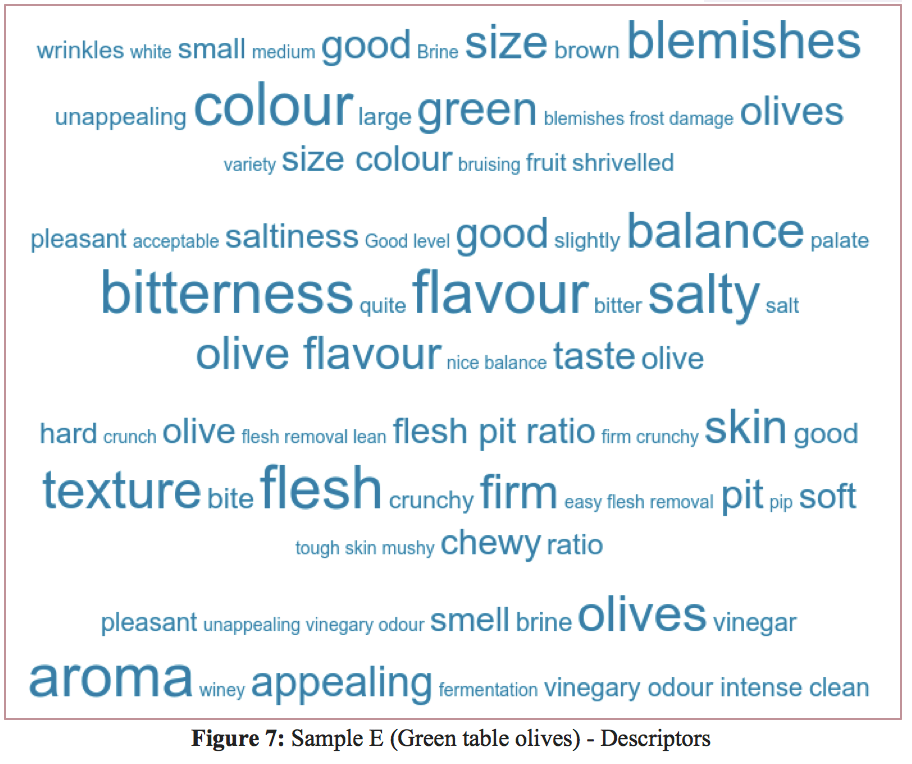
Learning from Round 4 and future recommendation:
The round 4 of TasteBook™ program has received many positive feedbacks from the participants about the learning intention, judging criteria, and the training notes provided with the samples. There are a couple of learnings from this round- the most important one is about understanding and knowing commonly occurring olive oil defects. Most of the participants (almost half) could identify the defective samples as “defective” without correctly identifying the actual defect. Sample A was easily identified as “Frosted” sample by most participants; however fewer participants have thought of “Rancid” as the other defect instead of “Muddy”. The future rounds of TasteBook™ should focus on providing learning experience of identifying and understanding various defects of olive oils and table olives. It is very important to acknowledge the fact that to grow and produce quality Australian olive products, everyone needs to have the fundamental knowledge of differentiating between EVOO from defective/faulted oils. When asked about what possible areas the future TasteBook™ rounds should focus on, the most common answers were “varietals” and “faults/defects”. It is highly evident from round 4 results that more training is required to bring everyone to a foundation knowledge level for identifying defects in both olive oils and table olives. The participants were also asked about the “flavoured olive oil- both infused and agrumato” and whether they would be interested to learn about this more in future rounds of TasteBook™. The response was very encouraging and one of the rounds in 2019 will focus on the same. One of the recommendations from many participants from previous rounds was to have a “live workshop or training session” where the willing participants could learn more about not only how to describe EVOO and TO, but how to appreciate them and upgrade their skills. To meet their expectation, the National Olive Oil Conference in Wagga Wagga in October 2018 arranged a TasteBook™ Live workshop which saw approximately 40 participants registered and actively participated in the program.
The process of writing descriptors are getting easier for many trainee and enthusiasts; who took it up with a positive intention of learning how to write descriptor well and this was evident from the detailed word clouds in this report. The use of online SurveyMonkey system to capture participants’ feedback gathered positive responses; however some participants still have difficulties in completing the evaluation online in one sitting. Round 4 sample presentation and packaging were also received high appreciation and the feedback was very positive. Most participants (92.5%) are willing to take part in the future rounds of TasteBook™ program and they can see clear benefits to them and the Australian Olive industry in continuing this quarterly program in 2019. For 87.5% of the participants registration cost is not an issue for future TasteBook™ participation. The next round of TasteBook™ Round 5 is scheduled for February 2019.
Acknowledgement:
The author would like to sincerely acknowledge and thank Shane Cummins, AOA Chief Judge and the TasteBook™ Convenor, Peter McFarlane, Convenor- National Table Olive Committee (AOA) and Gerri Nelligan, Managing Editor, Australian & New Zealand Olivegrower & Processor for their continuous support, patience and strong belief in making this unique TasteBook™ initiative successful.


